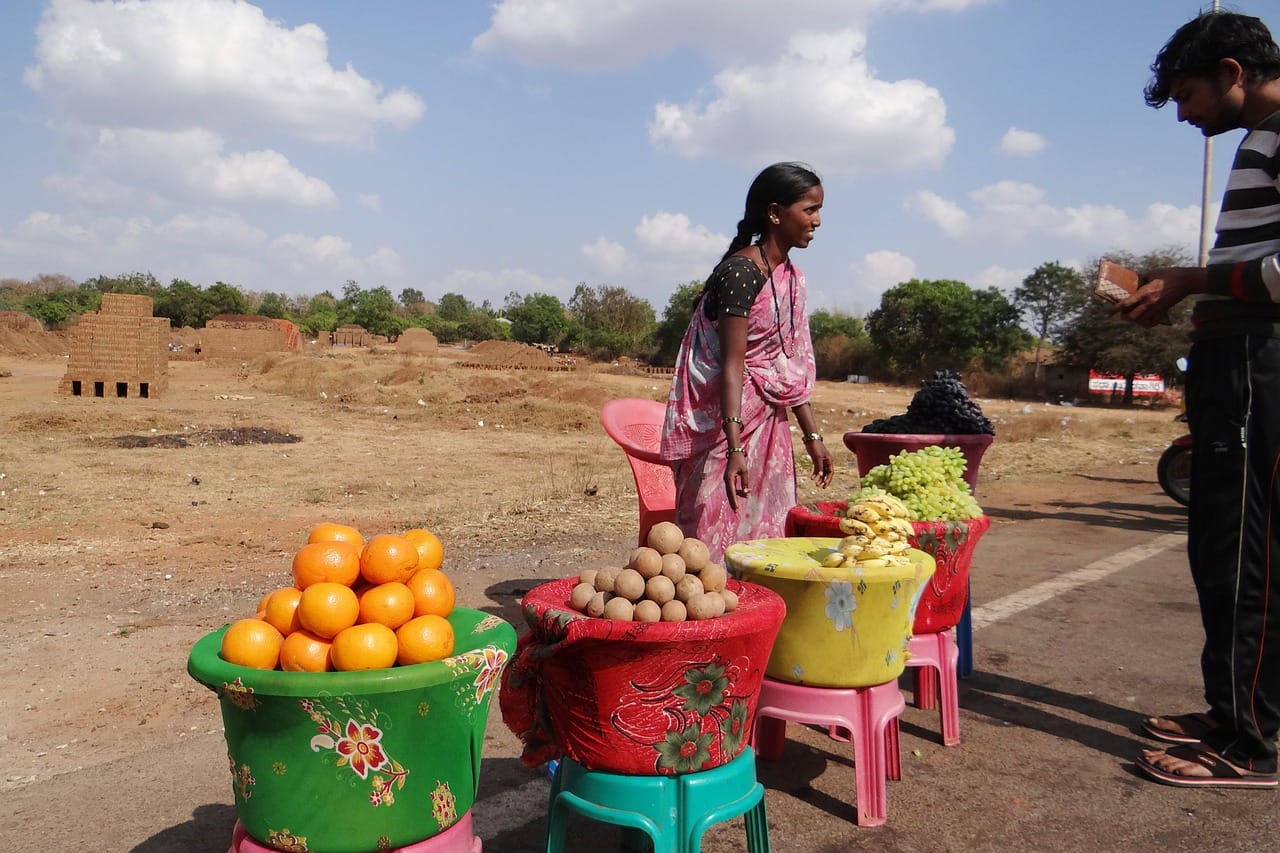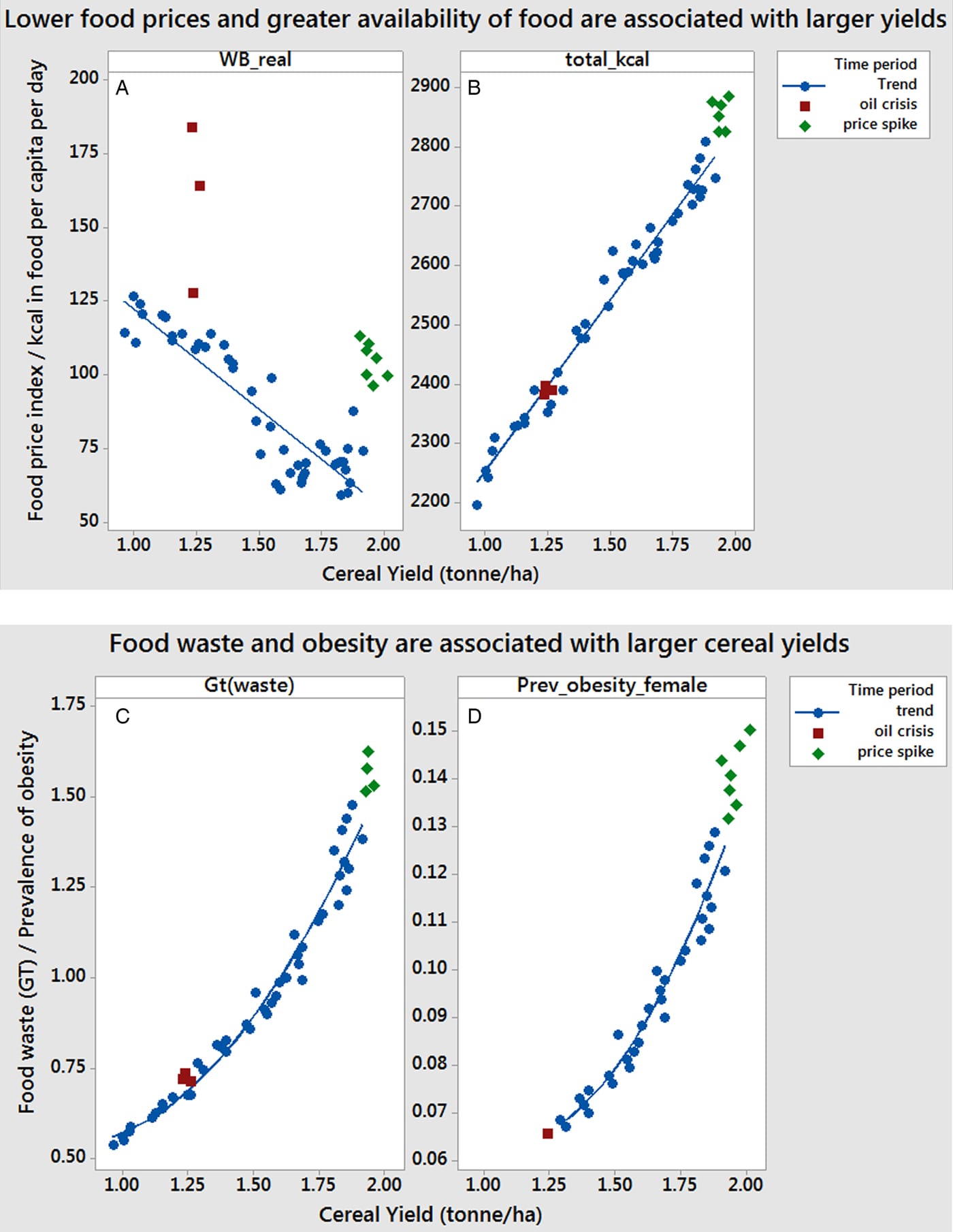
Radical food system overhaul could deliver US$10 trillion per year in benefits
A report from the Food System Economics Commission (FSEC) argues that the current set up of food systems globally (i.e. what food we grow, how we grow it and how we distribute it to people) has a cost far bigger than their contribution to global prosperity and is on an unsustainable trajectory.
However, whilst a radical overhaul of the global food system to make it more sustainable could raise agricultural commodity prices by approximately one third by 2050, this would be outweighed by US$5 trillion to US$10 trillion per year in benefits - that represents 4% to 8% of global GDP in 2020.
Let's first look at some of the costs of the current food system highlighted in the FSEC report over and above the direct costs of producing and distributing food:
- Health costs: the economic cost of ill health and its negative impacts on labour productivity = US$11 trillion. These come from the impacts of undernutrition (estimated as currently impacting 735 million people globally) but largely from non-communicable diseases such as diabetes, hypertension and cancer with a large share of the burden born by people living with obesity (estimated at 770 million people globally). The focus on 'yields per unit input' has led to a massive growth in agricultural produce supply and subsequent declines in price. But that availability of increasingly cheaper calories has led to a vicious circle of increasing demand for cheaper production, increasing waste and higher levels of obesity.

Under the current trends pathway, by 2030, the direct medical costs of treating the health consequences of overweight and obesity could rise from US$600 billion today to close to US$3 trillion by 2030.
- Environmental costs: reflect the negative impacts on ecosystems and climate = US$3 trillion. Current practices account for one third of global greenhouse gas emissions, net loss of more than 6 million hectares of natural forest per year and biodiversity loss and impacts from nitrogen surplus, leaching into water and air. Under the current pathway scenario it is estimated that food waste increases by 16% to 76 kg of dry matter per capita in 2050 - that's almost one of Sandy per person per year in food waste! Between 2020 and 2050, an area equivalent to 1.3x the size of France will be lost in natural forest and the nitrogen surplus increases by 22% to 300 Mt N per year, further polluting and destroying biodiversity.
- Structural poverty: reflects the low incomes of many who work in food production.
So what are the changes being proposed in the 'Food System Transformation' pathway?
- Shifting consumption patterns towards healthy diets through policy/marketing regulation etc.
- Resetting incentives and repurposing government support for agriculture addressing the balance between 'Big Agriculture' and smaller independent farmers - the recent farmers' protests in France show that this is a global issue. Subsidy repurposing needs careful thought so as not to displace production to less efficient countries, increasing environmental adverse impacts.
- Resetting incentives and targeting revenue from new taxes to support the food system transformation, making food systems net carbon sinks and reducing nitrogen pollution.
- Innovating to increase labour productivity and workers' livelihood opportunities, especially for poorer workers in food systems. For example, improving plant breeding in low- and middle-income countries; supporting environmentally sustainable, biodiversity-friendly, and low-emission farming systems.
- Scaling up safety nets to keep food affordable for the poorest, with an initial focus on children.
Implementing these changes is estimated to cost between US$200 billion and US$500 billion per year but the expected benefits should amount to US$5 trillion per year at least (and potentially as much as US$10 trillion per year) so dwarfing that cost.
The Food System Economics Commission is an independent academic commission set up to help political and economic decision makers shift land-use and food systems to be more sustainable. It was convened by Gunhild Stordalen (EAT), Jeremy Oppenheim (Food and Land Use Coalition, FOLU) and Johan Rockström (Potsdam Institute for Climate Impact Research, PIK) who pioneered work on the planetary boundaries framework. A short introduction to them is in this video 👉🏾 https://www.youtube.com/watch?v=EvrcjanGerQ
There have been some innovative solutions proposed in the past ranging from diverting crops currently used to feed livestock to humans and a complete shift in how we view productivity. Here is a Deep Dive we published back in September 2022 that covers two research papers not covered by the FSEC report 👉🏾 https://www.thesustainableinvestor.org.uk/changes-to-feed-how-we-feed/
This article featured in What Caught Our Eye, a weekly email featuring stories we found particularly interesting during the week and why. We also give our lateral thought on each one. What Caught our Eye is available to read in full by members.
If you are not a member yet, you can read What Caught Our Eye when it comes out direct in your email inbox plus all of our blogs in full...

Click this link to register 👉🏾 https://www.thesustainableinvestor.org.uk/register/

Please read: important legal stuff.

